Bb1.9
The great mystery which needed explanation was how Mother Nature
(Pacha-mama) was able to regenerate (reincarnate) herself, come alive again after her
deep sleep in winter. Observations indicated a key ingredient
was water; and sweet water (vai) was produced in
abundance from the
glaciers high up in
the (c)old mountains (mauga) when in spring the rays
(beams) from the Sun melted (terminated) the
ice, which then as a fluid was transported downwards in the forms
of the rivers growing in size.
Pei. Grooves, still
visible on the steep slopes of some hills, anciently used as
toboggans. People used to slide down them seated on banana-tree
barks. This pastime, very popular, was called pei-âmo.
Vanaga. Like, as; pei ra, thus, like that; such, the same
as; pei na, thus, like that; pei ra ta matou,
proverb; pei ra hoki, likeness, similitude; pei ra tau,
system; pei ra hoki ta matou, usage. PS Sa.: pei,
thus. This is particuarly interesting as preserving one of the
primordial speech elements. It is a composite, pe as, and
i as demonstrative expressive of that which is within
sight; therefore the locution signifies clearly as-this.
Churchill. Mgv.: To juggle balls. Ta.: pei, id. Mq.:
pei, id. Peiaha, jaws, gills of fish. Ta.: peihaha,
peiha, gills. Ma.: piha, id. Peipei, to
approach. Churchill.
... In ancient Egypt they thought Sirius was
behind the yearly rise of the Nile ... the seasonal cycle,
throughout the ancient world, was the foremost sign of rebirth
following death, and in Egypt the chronometer of this cycle was
the annual flooding of the Nile ...
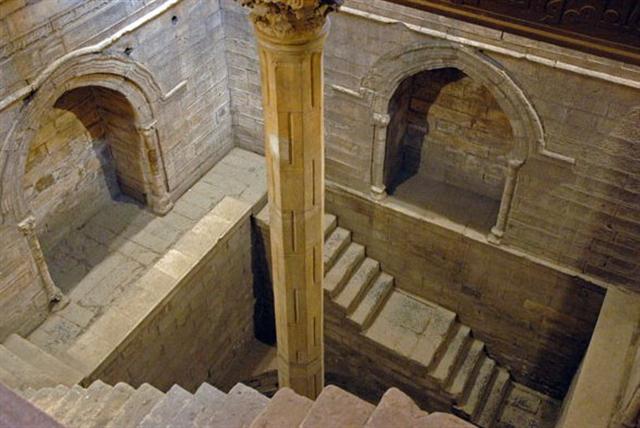
The creator of the B text has placed a significant dot at the
glyph where the Water-jar of Aquarius was
located according to the ancients:
 |
 |
 |
 |
|
421 + 29 =
450 |
Bb1-30 |
Bb1-31 |
Bb2-1 (32) |
|
υ Oct. (341.0), α/91 Lac. (341.1),
HOMAN (Hero) = ζ Pegasi,
β Piscis Austrini (341.2), ν Tucanae (341.5),
υ Aquarii
(341.9) |
η Aquarii
(342.1),
σ
Gruis (342.4),
SITULA
(Water-jar) = κ Aquarii
(342.7)
*301.0 = *342.4 - *41.4 |
ε Piscis Austrini (343.5), ο Pegasi, β Gruis
(343.8) |
ρ Gruis (344.0),
MATAR (Rain) =
η Pegasi
(344.2), η Gruis (344.6), β Oct. (344.7) |
|
Febr 25 (421 = 241 + 180) |
26 (396 + 26) |
27 (31 + 27 =
2 * 29) |
28 (360 + 64) |
|
Aug 27 (180 +
2 * 29½) |
28 (422 -
182) |
29 (58 + 183) |
30 (242 = 360
- 118) |
|
Corresponding
right ascension days in the Golden Age of the
Bull: |
|
DEC 23 |
X-MAS EVE |
25 (359 = 423 - 64) |
26 (177 +
183) |
|
JUNE 23 |
ST JOHN'S DAY |
25 (176) |
26 (6 * 29½) |
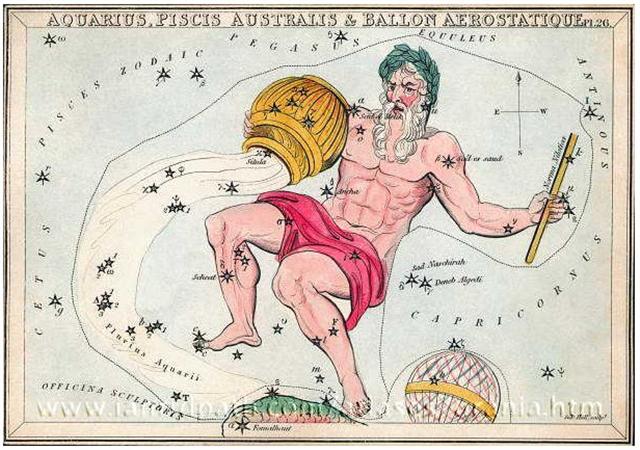
However, the life-restoring Rain falling from the sky was
not scheduled
to
arrive until the first glyph in
line Bb2.
 |
 |
 |
|
SITULA |
Bb1-31 (452) |
Bb2-1 (32) |
|
X-MAS EVE |
DEC 25 |
MATAR
(360) |
|
ST JOHN'S DAY |
JUNE 25 |
26 (6 * 29½) |
In other words, although there was an assymmetry in 10
lines of glyphs on side a of the B tablet in contrast to 12 lines on
side b, the great change seems to have been documented to
occur after 11 (after 'one more' than 10) lines, and from there we
can continue
to count glyph lines to 22 (twice 11) at the end of side b.
...Could old clock faces have had a gap between 11 and 1?
But modern thought disregarded the face of the Moon, for
the face of the Sun was constantly illuminating -
industrious light was leaving no room for recreating
life ...
Number 22, we can recall, could point at the old star
at the north pole - i.e. to Vega ruling the 22nd
Hindu nakshatra station Abhijit (Victorious):

 |
 |
 |
 |
 |
|
Ba5-39 |
Ba5-40 (204) |
Ba5-41 |
Ba5-42 |
Ba5-43 |
|
ko te tagata kia hiti ki
te purega - ko te tagata kua noi arurua koa ra. |
|
Hiti. 1. To show itself
again, to reappear (of the new moon, of a
constellation - meaning uncertain). 2. Said of
thin, tough-fleshed fish of indifferent taste:
ika hiti. 3. Said of fish when they come
to the stones of the shore for insects among the
seaweed: he hiti te ika. 4. To reproach
someone for his ingratitude. Vanaga. 1. To rise,
to appear, to dawn; hitihaga, rising;
hitihaga roa, sunrise; hitihiti, to
dawn; horau hitihiti, break of day;
hakahiti ki te eeve, to show the buttocks.
2. Puffed; gutu hiti, thick lips.
Churchill. |
|
KAUS MEDIUS = δ Sagittarii,
κ Lyrae (277.5),
TUNG HAE (Heavenly Eastern Sea) = η Serpentis
(277.7),
SHAOU PIH (Minor Minister) = φ Draconis
(277.8),
KWEI SHE = χ Draconis
(277.9) |
φ
Oct. (278.1),
KAUS AUSTRALIS = ε Sagittarii
(278.3),
ξ
Pavonis (278.4), AL
ATHFAR (The Talons of the Falling Eagle) =
μ
Lyrae
(278.6)
*237.0 = *278.4 - *41.4 |
KAUS BOREALIS = λ Sagittarii
(279.3) |
ν
Pavonis (280.4),
κ
Cor. Austr.
(280.9)
*239.0 = *280.4 - *41.4 |
Abhijit-22 (Victorious)
θ
Cor. Austr.
(281.0),
VEGA = α Lyrae
(281.8) |
 |
|
Dec 23 |
X-mas Eve
(358) |
25 |
26 (360) |
27 |
|
June 23 |
St John's Day
(175) |
25 |
26 (206 - 29
= 6 * 29½) |
27 |
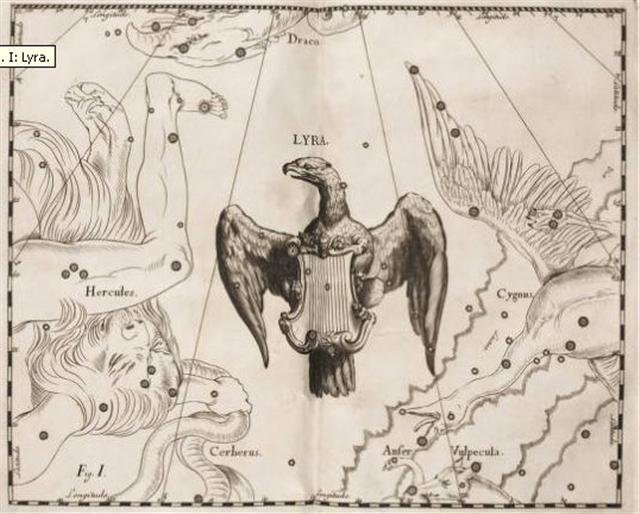 |
But 22 could also allude to the value of
π (= 22 / 7 → July 22), or to
Betelgeuze (*88 →
22 * 4 → 91 - 3)
... Odysseus and his fleet were now in a mythic realm of
difficult trials and passages, of which the first was to
be the Land of the Cyclopes, 'neither nigh at hand, nor
yet afar off', where the one-eyed giant Polyphemus, son
of the god Poseidon (who, as we know, was the lord of
tides and of the Two Queens, and the lord, furthermore,
of Medusa), dwelt with his flocks in a cave. 'Yes, for
he was a monstrous thing and fashioned marvelously, nor
was he like to any man that lives by bread, but like a
wooded peak of the towering hills, which stands out
apart and alone from others.' Odysseus, choosing twelve
men, the best of the company, left his ships at shore
and sallied to the vast cave. It was found stocked
abundantly with cheeses, flocks of lambs and kids penned
apart, milk pails, bowls of whey; and when the company
had entered and was sitting to wait, expecting
hospitality, the owner came in, shepherding his flocks.
He
bore a grievous weight of dry wood, which he cast down
with a din inside the cave, so that in fear all fled to
hide. Lifting a huge doorstone, such as two and
twenty good four-wheeled wains could not have raised
from the ground, he set this against the mouth of
the cave, sat down, milked his ewes and goats, and
beneath each placed her young, after which he kindled a
fire and spied his guests ...
The beginning of line Bb1 was at the Tail of the Swan; a great white bird with a figure like 2
- which we
all remember paddling softly upon tranquil waters:
... In the
morning of the world, there was nothing but water. The
Loon was calling, and the old man who at that time bore
the Raven's name, Nangkilstlas, asked her why.
'The gods are homeless', the Loon replied. 'I'll see to
it', said the old man, without moving from the fire in
his house on the floor of the sea. Then as the old man
continued to lie by his fire, the Raven flew over the
sea. The clouds broke. He flew upward, drove his beak
into the sky and scrambled over the rim to the upper
world. There he discovered a town, and in one of the
houses a woman had just given birth ...
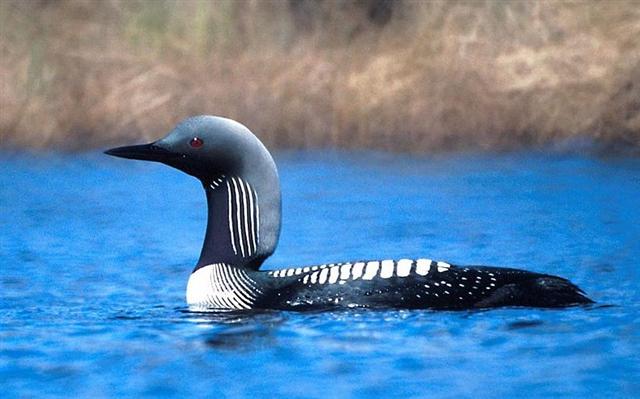
 |
 |
 |
 |
 |
 |
 |
|
Bb1-1 (422) |
Bb1-2 |
Bb1-3 |
(155
+ 270) |
Bb1-5 |
Bb1-6 |
Bb1-7 |
|
|
|
koia kua here
i to reva ika |
kua
huka ia -
i to maro |
na te tagata
kua oho |
ki to haga |
e tagata rave
ra |
i te ika - kua
mau i te ahi |
manu ka rere
ïa |
|
He-amoga i te
hukahuka, to tie a bundle of
wood. Ku hú á te huka-huka, ku
herohero á i roto i te ahi,
burning wood shows red in the fire.
Vanaga. |
|
VISIBLE CLOSE TO THE FULL MOON: |
|
μ²,
μ¹
Oct. (313.2),
DENEB CYGNI (Tail of the Swan) =
α
Cygni
(313.5),
β
Pavonis (313.6),
δ
Delphini (313.8) |
Al Sa’d al
Bula'-21 (Good Fortune of the
Swallower) /
Dhanishta-24
(Most Famous) /
Girl-10 (Bat)
YUE (Battle-Axe) =
ψ
Capricorni
(314.3),
GIENAH CYGNI =
ε
Cygni,
η
Cephei (314.5),
γ
Delphini (314.6),
σ
Pavonis (314.7),
ALBALI =
ε
Aquarii
(314.8)
BETELGEUZE (α Orionis) |
BATEN ALGIEDI (Belly of the Goat) =
ω
Capricorni
(315.8) |
μ Aquarii
(316.0) |
ε Equulei (317.8) |
No star listed (318) |
21h (319.6)
ARMUS = η Capricorni (319.0),
DORSUM =
θ
Capricorni
(319.3),
TSOO = 24 Capricorni
(319.7) |
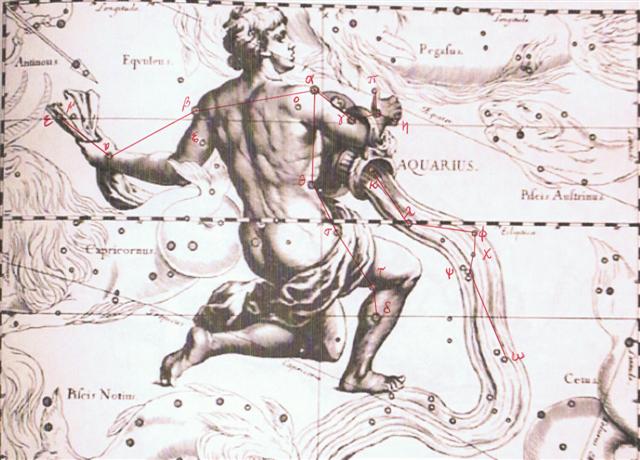 |
|
Jan 28 |
29 |
30 (364 + 31) |
31 (425 - 29) |
Febr 1 (40) |
2 |
3 |
|
NOV 25 |
26 |
27 |
28 (332) |
29 |
30 |
DEC 1 |
Her place up in the sky was at the end of the Crocodile
Canoe, where there was a Robber's Stick:
... All was now ready for departure
except that there was no fire in the smithy. The
ancestor slipped into the workshop of the great Nummo,
who are Heaven's smiths, and stole a piece of the sun in
the form of live embers and white-hot iron. He seized it
by means of a 'robber's stick' the crook of which ended
in a slit, open like a mouth. He dropped some of the
embers, came back to pick them up, and fled towards the
granary; but his agitation was such that he could no
longer find the entrances. He made the round of it
several times before he found the steps and climbed onto
the flat roof, where he hid the stolen goods in one of
the skins of the bellows, exclaiming: 'Gouyo!',
which is to say. 'Stolen!'. The word is still part of
the language, and means 'granary'. It is a reminder that
without the fire of the smithy and the iron of hoes
there would be no crops to store ...
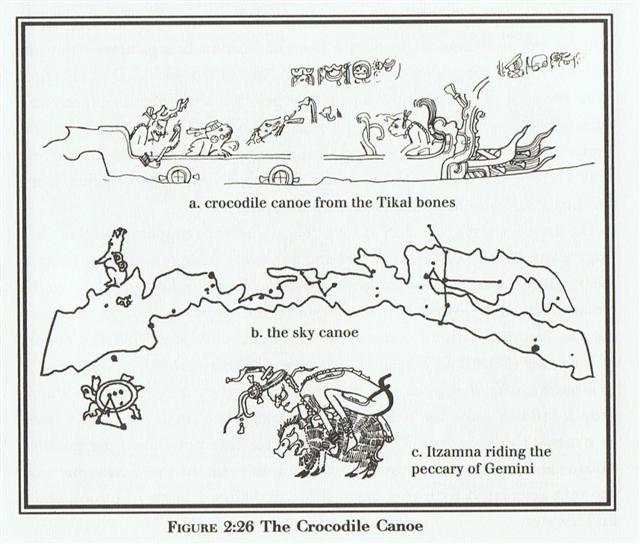

 |
 |
 |
 |
 |
 |
 |
|
Bb1-8 (429) |
Bb1-9 |
Bb1-10 |
Bb1-11 (4 * 108) |
Bb1-12 |
Bb1-13 |
(15 * 29) |
|
ki te tagata |
ka rere ki te huaga |
eaha te tagata haga |
i tona
mea ke |
kua noho rau ki te nohoga
o raua |
e kua hakaagana ko te ariki |
|
Rau
1. (Also: raupá) leaf of a plant, stem
and leaves. 2. Hundred: e tahi te rau, e rua
te rau, etc., 100, 200... Also seems to have
been used in the meaning of 'many'. Tu'u
henua rau, someone who has travelled to many
countries (such were called in the 19th century
natives who had travelled abroad, employed as
sailors). Compare with: tai raurau-á riki.
Vanaga. Rau
hei.
1. Branch of mimosa. 2. Killed enemy. 3. Hanged
'fish'. 'Branche
du mimosa (signe de mort), ennemie túe (poisson
suspendu)' according to Jaussen.
Barthel. Ra'u
1. To take something without the owner's
permission; to seize something forcibly. 2.
Ra'u maahu, ancient expression, literally:
to appropriate the steam (maahu) of the
food just taken out of an earth oven. It refers
to intruders coming to help themselves
uninvited. Warriors off to a battle used to be
told: E ra'u maahu no koe, o pagaha'a!
meaning: 'Eat little, lest you be heavy (and
lose your agility).' Vanaga. 1. Sa.: la'u,
to clear off, to carry away; la'u mai,
to bring. Uvea: laku, to send, to throw
into. Ha.: laulau, a bundle, a bag; a
wrapper of a bundle, the netting in which food
is carried; lalau, to seize, to catch
hold of. 2. To.: lau, lalau,
lauji, to pinch with the fingers, to nip.
Ha.: lau, to feel after a thing; lalau,
to extend (as the hand), to seize, to catch hold
of. 3. Sa.: lau, a leaf; lalau, to
be in leaf; laulau, a food tray plaited
from a coconut leaf, to set out food on such a
tray or on a table. To.: lau, lou,
a leaf; laulau, a tray. Fu., Uvea,
Nuguria: lau, a leaf. Niuē:
lau,
a leaf; laulau,
a table. Ha.: lau,
a leaf; laulau,
the netting in which food is carried. Ma., Ta.,
Rarotonga, Rapanui, Paumotu, Nukuoro, Fotuna:
rau,
a leaf. Mgv.: rau,
rou,
id. Mq.: au,
ou,
id. Churchill 2.
Ta.:
rauhuru, dry
banana leaf. Mq.: auhuu,
id. (To.: hulu,
leaves dry and dead.) Ha.: lauhulu,
banana leaf. Churchill.
... the
Icelanders reckoned in misseri,
half-years, not in whole years, and the
rune-staves divide the year into a summer and a
winter half, beginning on April 14 [104 = 40 +
64]and October 14 respectively. But in Germany
too, when it was desired to denote the whole
year, the combined phrase 'winter and summer'
was employed, or else equivalent concrete
expressions such as 'in bareness and in leaf',
'in straw and in grass'
... |
|
VISIBLE CLOSE
TO THE FULL MOON: |
|
DRAMASA =
σ
Oct.,
χ
Capricorni (320.0),
ν
Aquarii (320.3),
γ
Equulei (320.6),
ο
Pavonis (320.8) |
α Oct. (321.5), δ
Equulei (321.7),
φ
Capricorni (321.8) |
KITALPHA (Part of a Horse) = α Equulei
(322.0),
ALDERAMIN (The Right Arm) =
α
Cephei
(322.9) |
DAI =
ι
Capricorni
(323.5),
β
Equulei (323.8) |
γ
Pavonis (324.1),
YAN =
ζ
Capricorni
(324.6) |
Al Sa'd al Su'ud-22
(Luckiest of the Lucky) /
Emptiness-11 (Rat)
TSIN = 36 Capricorni
(325.2),
ALPHIRK (The Flock) =
β
Cephei
(325.7),
SADALSUD =
β
Aquarii,
ξ
Gruis (325.9) |
No star listed (326) |

... In China,
with Capricornus, Pisces, and a part of
Sagittarius, it [Aquarius] constituted the early
Serpent, or Turtle, Tien Yuen; and later
was known as Hiuen Ying, the Dark Warrior
and Hero, or Darkly Flourishing One, the
Hiuen Wu, or Hiuen Heaou, of the Han
dynasty, which Dupuis gave as Hiven Mao.
It was a symbol of the emperor Tchoun Hin,
in whose reign was a great deluge; but after the
Jesuits came in it became Paou Ping, the
Precious Vase. It contained three of the sieu,
and headed the list of zodiac signs as the
Rat, which in the far East was the ideograph
for 'water', and still so remains in the
almanacs of Central Asia, Cochin China, and
Japan ... |
|
Febr 4 (400) |
5 (365 + 36) |
6 |
7 (432 - 29) |
8 (*324) |
9 (40) |
10 |
|
DEC 2 (336) |
3 |
4 |
5 |
6 |
7 |
8 |
 |
 |
 |
 |
 |
 |
 |
|
Bb1-15
(436) |
Bb1-16 |
Bb1-17 |
→ 4 * 29½ |
Bb1-19 |
Bb1-20 |
Bb1-21 |
|
mai tae rere te manu
ki te mea maa i te
rima |
kua rere ïa ki te veveke |
mai tae hokohuki - ia
koia ra |
kua rerega a manu |
rere ki te hetu mai tae
hua ia |
kua haga ia
ki te mea o tona hare
pure |
|
Veve.
Pau.: miserable. Ta.: veve, poor,
needy, miserable. Churchill. Veveke,
to hurry up, hasten, quicken. Websters.
Pure.
Cowrie (Cypraea caput draconis);
pure vaka, another type of cowrie,
which can float on the sea like a diminutive
boat (vaka). Vanaga. 1. To pray, to
supplicate, invocation, prayer; hare pure,
church, chapel; tae pure,
irreverence; purega, prayer P Pau.,
Mgv., Mq., Ta.: pure, to pray. In
Samoa, Tonga, Niuē,
Futuna, Uvea, pule
means to command. 2. A shell T. P
Pau.: hakapurepure, to dye, to color.
Mq.: pué, the porcelain shell. Ta.:
pure, a mark. Purepure,
spotted, dappled; ragi purepure,
dappled sky. Purepurea, spotted. P
Pau.: hakapurepure, to dye, to color.
Mgv.: purepure, printed cloth;
akapurepure, to paint in different
colors. Mq.: puépué, covered with
pale scars. Ta.: purepure, spotted,
dappled. Churchill.
Pureva,
rock, stone (small enough to be thrown by
hand). Vanaga.
Pureva, to throw a stone. Ta.:
Pureva,
to be on the eve of going. Ha.:
puleva,
to float here and there. Churchill. Pau.:
Pure-hiva, a butterfly. Mgv.:
pure-rehue, id. Ta.: pure-hua, a
moth. Mq.: pure-hua, id. Ma.:
pure-hua, id. Churchill.
Hare. House, family,
home. Vanaga. House, cabin, habitation,
building, hut, structure; hare iti,
hut; hare itiiti no, cabin;
hare kahu, tent; hare neinei,
latrine; hare no iti, cell; hare
nunui, palace; hare pohurihuri,
prison; hare pure, chapel, church;
ki te hare, at home. Harepepe,
kelp. Harepiko, a. asylum, place of
refuge; b. ambush, snare. Harepopo,
shed. Harepopokai, storehouse.
Churchill.
|
|
VISIBLE
CLOSE TO THE FULL MOON: |
|
CASTRA = ε Capricorni
(327.2),
BUNDA = ξ Aquarii
(327.5)
SIRIUS (α Canis Majoris) |
Mahar sha hi-na
Shahū-26 (Western One in the Tail of the
Goat)
NASHIRA =
γ
Capricorni
(328.0),
ν
Oct. (328.3),
AZELFAFAGE (Tail of the Hen) =
π¹
Cygni,
κ
Capricorni (328.7) |
Arkat sha hi-na
Shahū-27 (Eastern One in the Tail of the
Goat)
ENIF (The Nose) =
ε
Pegasi, ERAKIS =
μ
Cephei
(329.2),
46 CAPRICORNI, JIH (the Sun) =
κ
Pegasi
(329.3),
ι
Piscis Austrini (329.4),
λ
Capricorni (329.6),
ν
Cephei (329.7),
DENEB ALGIEDI =
δ
Capricorni
(329.8)
*288.0 = *329.4 - *41.4 |
θ
Piscis Austrini (330.1),
λ
Oct.
(330.7) |
KUH (Weeping)
=
μ
Capricorni (331.4),
γ
Gruis (331.5)
*290.0 = *331.4 - *41.4 |
No star listed (300 + 32) |
η Piscis Austrini (333.4)
*292.0 = *333.4 - *41.4 |

... The
four bereaved and searching divinities, the
two mothers and their two sons, were joined
by a fifth, the moon-god Thoth (who appears
sometimes in the form of an ibis-headed
scribe, at other times in the form of a
baboon), and together they found all of
Osiris save his genital member, which had
been swallowed by a fish ... |
|
Febr 11 |
12 (437 -
29) |
13 (*329) |
14 |
15 |
16 (412) |
17 (*333) |
|
9 (7 * 7
* 7) |
DEC 10
(344) |
11 |
12 |
13 |
14 (348) |
15 |
The 12th Chinese station Roof-top came at 22h,
which was 20 days after their station number 10, i.e. the Girl at
*314. And 15 right ascension days before the 13th station House (Pig
→ Peccary).
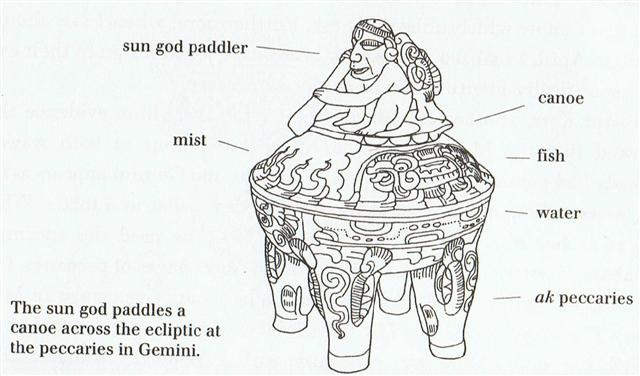
 |
 |
 |
 |
 |
 |
 |
|
Bb1-22 (443) |
Bb1-23 |
Bb1-24 |
→ 5 * 5 * 5 |
Bb1-26 |
Bb1-27 |
Bb1-28 (449) |
|
eko te manu kua mau -
ki to ahi |
kua haga - te mea ke |
kua hupe |
ma te maitaki |
kua rere te manu |
vae oho |
ku pepepepe te manu |
|
Hupee. Mucus; hupeehupee,
asthma. T Pau., Ta.: hupe, mucus.
Churchill. Ta.: Hupe, mucus.
(Sa.: isupē,
id.) Ma.: hupe,
id. Churchill. Rhume, air
froide. Jaussen according to
Barthel.
Pepe.
1. A sketch. 2. Bench, chair,
couch, seat, sofa, saddle; here pepe,
mau pepe, to saddle; noho pepe,
a tabouret. Pepepepe, bedstead.
3. Pau.: butterfly. Ta.: pepe,
id. Mq.: pepe, id. Sa.: pepe,
id. Ma.: pepe, a moth;
pepererau, fin, Mgv.: pererau,
wing. Ta.: pereraru, id. Ma.:
parirau, id. Harepepe, kelp.
Here pepe, to saddle. Churchill.
Sa.: pepe, a butterfly, a moth,
to flutter about. Nukuoro, Fu., Niuē,
Uvea, Fotuna, Nuguria, Ta., Mq.:
pepe,
a butterfly. Ma.: pepe,
a grup, a moth; pepepepe,
a butterfly; pepeatua,
a species of butterfly. To.:
bebe, a
butterfly. Vi.: mbèbè,
a butterfly. Rotumā: pep,
id. Churchill 2. Mq.: Pepepepe,
low, flat. Ha.: pepepe, id.
Churchill. |
|
VISIBLE CLOSE TO THE FULL MOON: |
|
Rooftop-12 (Swallow)
22h (334.8)
KAE UH (Roof) = ο Aquarii
(334.0),
AL KURHAH (White Spot) = ξ Cephei
(334.4),
SADALMELIK (Lucky King) = α Aquarii,
AL DHANAB (The Tail) = λ Gruis
(334.6), ι Aquarii, ν Pegasi (334.7)
*293.0 = *334.4 - *41.4 |
ι
Pegasi (335.0),
ALNAIR (The Bright One) =
α
Gruis
(335.1),
μ
Piscis Austrini,
υ
Piscis Austrini (335.3),
WOO (Pestle) =
π
Pegasi
(335.7),
BAHAM =
θ
Pegasi (Good Luck of the Two Beasts),
τ
Piscis Austrini (335.8) |
ζ
Cephei (336.2),
λ
Cephei (336.3), -/270 Lac.
(336.7), λ Piscis Austrini (336.8) |
μ
Gruis (337.0),
ε
Cephei (337.2), 1/325 Lac. (337.3),
ANCHA (Hip) =
θ
Aquarii (337.4),
ψ
Oct.
(337.5), α Tucanae (337.9)
*296.0 = *337.4 - *41.4 |
Al Sa'ad al
Ahbiyah-23 (Lucky Star of Hidden Things)
/
Shatabisha-25
(Comprising a Hundred Physicians)
ε
Oct. (338.1),
ρ Aquarii
(338.2), 2/365 Lac. (338.5),
SADACHBIA =
γ
Aquarii
(338.6),
π
Gruis (338.9) |
β/172
Lac. (339.2),
4/1100 Lac. (339.4),
π Aquarii
(339.5)
*298.0 = *339.4 - *41.4
CASTOR
(α Gemini)
|
δ
Tucanae (340.1),
ρ
Cephei (340.2),
ν
Gruis (340.3),
ζ
Aquarii,
δ
Gruis (340.4),
5/1100 Lac.
(340.7), σ Aquarii, 6/650 Lac. (340.9)
*299.0 = *340.4 - *41.4
PROCYON (α Canis Minoris) |
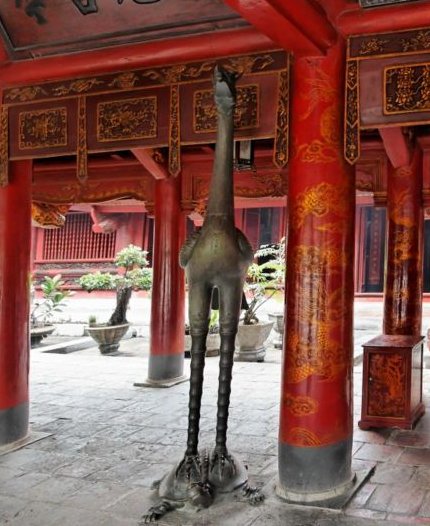
... Horapollo, the grammarian of
Alexandria, about AD 400, tells us that
the crane was the symbol of a
star-observer in Egypt
... Grus has as an alternative
name Flamingo (a name which sounds quite
similar to that of the bird Phoenix)
which obviously is based on 'flame'.
Phoenicopterus (the Flamingo) is
characterized by its red feathers.
Wikipedia: ... from Greek
φοινικόπτερος
meaning 'purple wing'. Purple is the
colour for kings and 'phoenix' should
therefore mean 'purple, the colour of
the king' ... |
|
Febr 18 (414) |
19 |
20
(*336) |
21 |
22
(447 - 29) |
23 (Terminalia) |
24
(420) |
|
DEC
16 (350) |
17 |
18 |
19 |
20 |
21
(SOLSTICE) |
22
(420 - 64) |
 |
 |
 |
 |
|
421 + 29 = 450 |
Bb1-30 |
Bb1-31 |
Bb2-1 (32) |
|
kukurutou
- kua mai ïa - ki to
vero |
kua haga i te mea ke |
e
kua mea i te mea ke |
|
|
Tou.
In ancient times, a
tou was
someone who had
recovered from an
epidemic, but whose
illness meant that
someone else in the
family had to die.
The tou were
regarded as portents
of evil. Toutou,
lush; fertile
(land). Toûa:
Egg yolk; the colour
yellow; soft,
fibrous part of tree
bark; toûa
mahute, mahute
fibres. Vanaga.
Toua: Wrath,
anger, rage,
revenge, battle,
combat, debate,
dispute, dissension,
uprising, revolt,
quarrel, fight,
hostility (taua);
toua rae, to
provoke, rae toua,
to open hostilities,
toua kakai,
to rebuke, tuki
toua, to stir up
dissension;
totoua,
hostility;
hakatoua,
fighter, warrior. P
Mgv.: toua,
war, battle. Mq.:
toua, war,
dispute, quarrel.
The form with o
is found only in
these three
languages, taua
is found in the
general migration,
Rapanui is the only
speech which has
both. Toutou,
fertile (tautau);
hakatoutou,
to fertilize. Mq.:
taútaú,
fertile. Toùvae,
to run;
hakauruuru
toùvae, id.
Churchill. |
|
υ Oct. (341.0), α/91
Lac. (341.1),
HOMAN (Hero) = ζ
Pegasi,
β Piscis Austrini
(341.2), ν Tucanae
(341.5),
υ Aquarii
(341.9) |
η Aquarii
(342.1),
σ Gruis (342.4),
SITULA (Water-jar) =
κ Aquarii
(342.7)
*301.0 = *342.4 -
*41.4 |
ε Piscis Austrini
(343.5), ο Pegasi, β
Gruis (343.8) |
ρ Gruis (344.0),
MATAR (Rain) = η
Pegasi
(344.2), η Gruis
(344.6), β Oct.
(344.7) |
|
Febr 25 (421 = 241 +
180) |
26 (396 + 26) |
27 (31 + 27 = 2 *
29) |
28 (360 + 64) |
|
Aug 27 (180 + 2 *
29½) |
28 (422 - 182) |
29 (58 + 183) |
30 (242 = 360 - 118) |
|
Corresponding right
ascension days in
the Golden Age of
the Bull: |
|
DEC 23 |
X-MAS EVE |
25 (359 = 423 - 64) |
26 (177 + 183) |
|
JUNE 23 |
ST JOHN'S DAY |
25 (176) |
26 (6 * 29½) |
A
great result from all these
exercises is to here be able
to locate the
origin of 29 (●)
in the B text - viz. the
difference between the
nakshatra day numbers at the
Full Moon and the glyph
numbers - for instance 450
(Bb1-29) - 29 =
421 (February 25).
On side a of the B tablet
glyph
number 29 was
at Alhena (Twins of the Shepherd),
which star significantly was
observed at the right
ascension line of the Full
Moon when the Sun reached
January 1 (☼).
And in the A
text, we remember,
number
29 was an integral key
to the structure:
|
59 |
 |
520 |
 |
13 * 37 |
 |
270 |
 |
|
Ab1-1 |
Ab7-26 |
Aa5-7 |
Aa8-26 |
|
20 * 29 |
26 * 29 |
.jpg)
|









































.jpg)